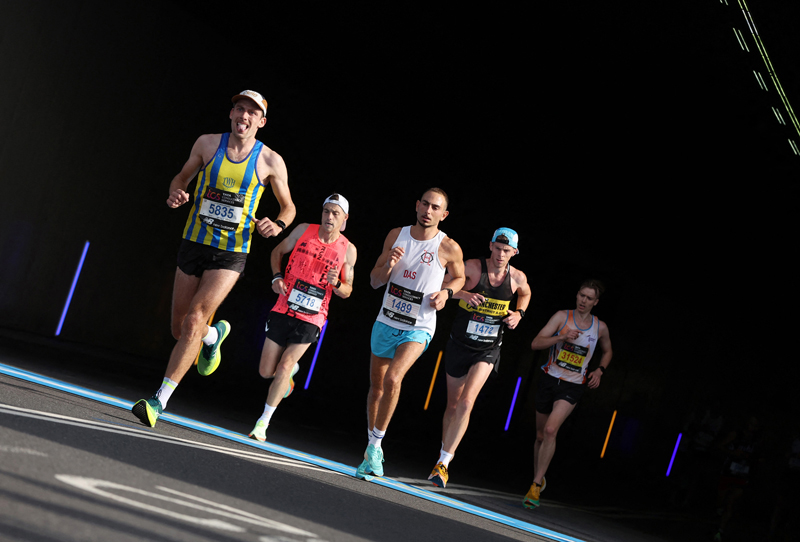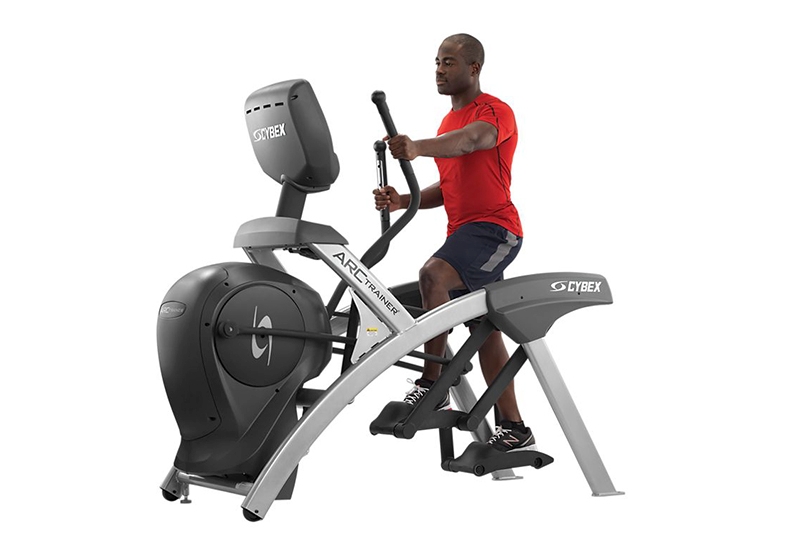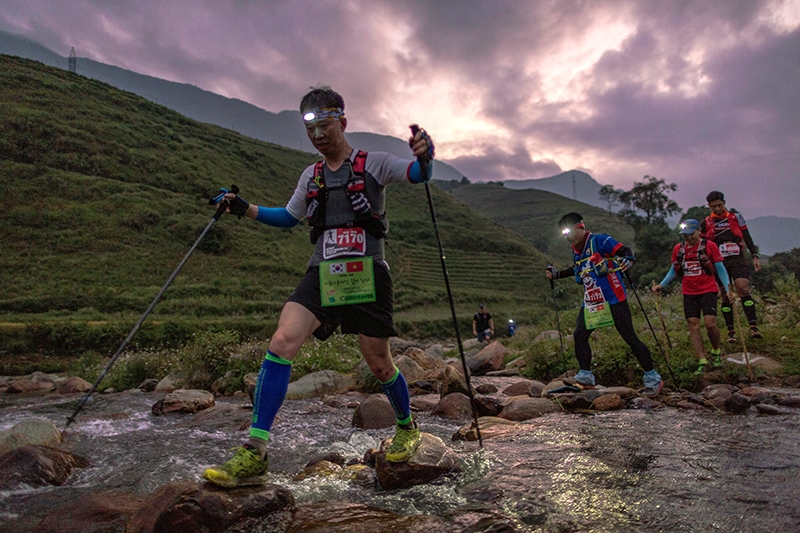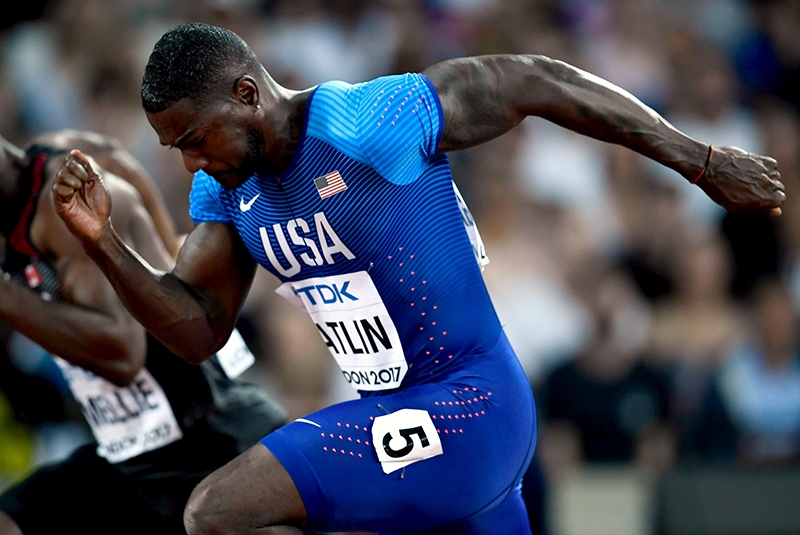You are viewing 1 of your 1 free articles. For unlimited access take a risk-free trial
Pre-training: insure yourself against injury
John Shepherd reviews some of the most common injuries suffered by runners and shows how they can be avoided by adding some simple pre-training exercises into your routine
John Shepherd reviews some of the most common injuries suffered by runners and shows how they can be avoided by adding some simple pre-training exercises into your routine
Most endurance sports injuries result from overuse – ie repeating the same action over and over and over again. Such injuries include ankle sprains; patellofemoral pain syndrome (knee pain), shin splints, plantar fasciitis (soreness under the foot) and Achilles tendonitis. In this article, we’ll take a look at these and provide some ‘pre-training’ solutions.
Pre-training exercises are a bit like an insurance policy – although you don’t need to perform them, runners that do can reduce the risk of injury and recover from any injuries that do occur more rapidly. There’s plenty of research on the value of pre-training exercises in various sports. Much of this indicates that performing exercises to improve the function, strength and control aspects of key joint/muscle groups in a sport is of high value. Some of this research is presented alongside practical exercises in this article. There is also an online video available demonstrating these exercises, which will serve to complement the illustrations shown in this article. Click on, or copy and paste this link into the address bar of your Internet browser: tinyurl.com/y7lznouc
Ankle injuries
Turning an ankle is always a risk when running on uneven terrain, especially when tired. Sports scientists have studied how fatigue affects injury whilst running on various surfaces. Much research has focused on the muscles, ligaments and tendons of the ankle joint and how the movement of the foot is affected - ie its upward movement (dorsiflexion) and its downward one (plantarflexion).
Even if you have (or think you have) good ankle control, strength and body awareness, a reduction in ankle function can still be considerable when running - not only as the training run/race progresses but even in the days after. In one study, 23 trail runners had their ankle strength tested after a 6.5-kilometre downhill trail run (descents can magnify injury potential). Immediately post run, it was discovered that plantar flexor strength declined by 25%, and two days later it was still down by 10%Scand J Med Sci Ports 2016 N0V;26(11):1321-1333. Doi 10.111/sms.12583. Epub 2016 Nov 19.
The legacy of fatigue is something that needs thought. Pre-training your ankles will assist in reducing possible injury; however, when planning your training, it may well be worth avoiding back-to-back tough off-road runs. Including a recovery effort on flat terrain in between tough off-road runs will better allow ankle strength to return and reduce any accumulated loss of strength and function.
PRE-TRAINING EXERCISES TO BEAT ANKLE INJURY
FIGURE 1: LATERAL SHUFFLE TO THE SIDE

Lateral shuffle (see figure 1)
- How to: Stand with your feet just beyond shoulderwidth and drop down into a squat. Lift your arms so they are parallel to the ground. Initiate a sideways movement by skipping from your forefeet, taking reasonably long steps and generating some height.
- Do: 4 sets of x 10m reps to the left and 4 sets to the right.
You can also lateral shuffle backwards and forwards, for example, 5m one way then 5m the other. This introduces a greater braking element when you transition from one direction to the other. This ‘eccentric’ braking capability is vital for injury prevention (more later).
Triangle hop
- How to: Stand on your right leg. Hop about 75cm forwards and then immediately straight across to the left, about the same distance. Then immediately on landing, hop back to your starting position. Basically you’re hopping in a right-angle triangle pattern. Keep your torso relatively
upright and make your landings on your forefeet. - Do: 3 sets of 6 reps on each leg
One-legged medicine ball catch, return and throw
- How to: Stand on one leg, holding the foot of the non-grounded leg a couple of cms from the floor. Have a partner (about two metres away) throw a light to medium weight med ball (2-5kg) to you to a position immediately to your side. Catch the ball and control the momentum that will be generated through your body. Avoid wobbling too much and placing your non-grounded foot on the floor. Throw the ball back to your partner and repeat.
- Do: 2 sets of 10 reps from each leg with your standing leg to the outside and 2 sets of 10 from each leg, with your standing leg to the inside of the direction of throw.
NB: *No partner? Throw the ball against a wall and catch the return!
*This exercise will also improve the control of your movement through your knees, hips and core.
Plantar fasciitis
Plantar fasciitis affects the bottom of the feet, where the tissue thickens, causing restriction and pain. Research indicates that those suffering from plantar fasciitis have reduced ankle movement and are less able to absorb force through their feetSports Med. 1993 May;15(5):344-52. Research has also indicated that reduced ankle dorsiflexion is a potential cause of plantar fasciitisJ Bone Joint Surg Am. 2003 May;85-A(5):872-7, whilst other studies have indicated that sufferers of the condition also hit the ground harder with more vertical ground reaction forceClin J Sport Med. 2009 Sep;19(5):372-6. doi: 10.1097/JSM.0b013e3181b8c270.
PRE-TRAINING EXERCISES TO BEAT PLANTAR FASCIITIS
FIGURE 2: PLANTAR TOE STRETCH

Towel curls
This exercise strengthens the muscles that support the foot’s arch. Runners with a history of plantar faciitis often have lower arches (the arch acts as a shock absorber and energy returner).
- How to: Place one foot on a towel and then using your toes pull the towel in toward you, hold for a few seconds, and then push it back.
- Do: 3 sets of 5 reps
Toe strengthening/foot stretch (see figure 2)
- How to: Take hold of the toes of one foot whilst sitting and gently pull them toward you to stretch the arch of your foot. Hold for five seconds, release and repeat.
- Do: 5 sets of 5 reps for each foot.
Balance, running drills and barefoot running
In recent times, there has been a growth in popularity of minimalist running shoes (see figure 3) and barefoot running. The claimed benefits are improved running form and reduced injury, due to the forefoot strike that results. However, minimalist shoe (and definitely barefoot) running is not for all and needs a carefully controlled introduction.
What might be more relevant for runners is the use of other barefoot exercises and very controlled, short bouts of barefoot running to strengthen the foot and thus tackle plantar fasciitis - and indeed a myriad of other possible injuries. The feet are the foundations of a runner’s body and a weakness here will create the potential to create injury. Researchers have studied how female runners’ gaits were altered when running barefootMed Sci Sports Exerc. 2015 May;47(5):1009-16. doi: 10.1249/MSS.0000000000000505. In particular, they wanted to see whether common running injuries such as patellofemoral syndrome (knee pain - often regarded as the consequence of excessive hip abduction (EHA), hip internal rotation (HIR) and contralateral pelvic drop (CPD) - were in some way more likely to occur under various running conditions. In short it was found that barefoot running ‘corrected’ EHA, HIR and CPD, leading the researchers to conclude that ‘barefoot running could have potential for injury prevention or treatment’.
FIGURE 3: MINIMALIST FOOTWEAR

PRE-TRAINING EXERCISES TO BEAT PLANTAR FASCIITIS
FIGURE 4: BAREFOOT MARCHING HIGH-KNEE DRILL

FIGURE 5: CALF STRETCHING

Barefoot running
- How to: Run 40m gently barefoot on dry grass or an athletics track or similar, walk back and repeat.
- Do: 4-6 reps. Increase the reps and speed as your body gets used to the activity.
Barefoot marching high-knee drill (see figure 4)
- How to: Keep your hips high as you march forwards. Lift each leg in turn to a thigh parallel to the ground position and push the foot down to a position close to under your hips on each foot contact. Keep the feet dorsiflexed.
- Do: 4 reps of 20m.
Calf stretching (see figure 5)
Tight calf muscles can also cause plantar fasciitis. Calf stretches can therefore also help to guard against the condition developing.
- How to: Face a wall and lean against it with your outstretched arms. Move the leg with the calf muscle to be stretched back keeping your heel on the ground to stretch the calf.
- Do: 4 stretches holding each for 20-30 seconds.
Knee injuries
Although anterior cruciate ligament (ACL) injuries are less common in endurance athletes such as runners, it’s still worth working on balance and control of jumping forces to reduce potential ACL damage. Specific pre-training exercises will also serve to boost performance, thus adding another positive reason to perform them. Pre-training to prevent ACL damage will be of particular benefit to women, as women are eight times more likely to sustain an ACL injury in a non-contact situation compared to menKnee. 2007 Jun;14(3):218-23. Poorer technical control of landing forces, more internal rotation of the tibia (shinbone) and weaker hamstrings are identified as the prime reasons for this.
Jumps and landing on the move, and on rough terrain, are of course requirements
of trail, fell and mountain running races/ training. Working on specific jumping and balance skills will therefore have an additional performance-enhancing value too. Research indicates that a properly designed pre-training programme can reduce the potential for ACL injurySports Med Arthrosc Rehabil Ther Technol. 2011 Jul 14;3(1):14. Exercises that involve a jump followed by a controlled landing are utilised. The premise is that they will strengthen the muscles and improve the coordination of the movements involved in jumping. ACL injuries often occur when the knee’s degree of flexion is too great and hamstring activation is not up to the job of controlling impact. As a consequence, rather than landing in a strong position, the athlete ‘moves through’ the position needed to stabilise and control the landing, which places undue strain on the ACL.
PRE-TRAINING EXERCISES TO BEAT ACL INJURY
Single leg squats
Single leg squats will help you develop greater control, alignment, strength and proprioceptive control of the ankle, hip and knee. Proprioceptive ability refers to your body’s capacity to ‘know’ where the limbs are in space and then provide appropriate unconscious and conscious control.
- How to: Stand on one foot and fold the heel of the other up toward your bottom. Ensure your foot, knee and hip are in relative alignment. Keeping your heel on the floor, lower your body. Try to prevent ‘falling out of the movement’ (ie moving sideways) and losing balance. Don’t let your knee pass in front of your toes when squatting. Think: ‘sitting onto a chair that’s placed behind you’.
- Do: 3 sets of x 6 reps on each leg.
Plyometric/agility/landing force control exercises
There are numerous plyometric exercises you can do (see issue 357 for a fuller discussion of plyometrics). Performing them in all likelihood will not only reduce potential for ACL injury but also improve your performance economy. Simply put you’ll be able to run at increased speeds with less effort as your leg power has increased.
Eccentric drop jump (see figure 6)
Tight calf muscles can also cause plantar fasciitis. Calf stretches can therefore help to guard against the condition developing.
- How to: Stand on a suitably sturdy platform about 50cm high. Step off and land on two feet with your feet about hip-width apart. Land with minimal knee bend and attempt to hold still for two to three seconds. Think: ‘land and block’. This exercise involves an eccentric action –where the muscles stretch to absorb impact. Eccentric ability is not only necessary for reducing ACL injuries but is also key to increasing performance.
- Do: 4 sets of x 6 reps.
NB: *To progress the exercise, increase the height of the drop and eventually perform single leg landings (but be sure to progress carefully to these versions).
FIGURE 6: ECCENTRIC DROP JUMP

Lateral hops
Being able to withstand side-to side force is another key requirement in preventing knee injury.
- How to: Stand on one leg with one thigh parallel to the ground. Swing this leg away from you whist also pushing from the standing
leg to jump sideways. Land on the swung leg. As you land bring your other leg’s thigh up to a parallel to the ground position. Hold for two to three seconds. Repeat this movement back by leaping back to where you started. - Do: 4 sets of x 8 reps.
Shin Pain
Runners often experience pain on the insides of their shins. This can be caused by various conditions such as compartment syndrome and stress fractures – although they commonly get lumped together at least initially as shin splints (or medial stress syndrome - MSS). Researchers have looked at the risk factors for shin pain in a review of published researchBr J Sports Med. 2015 Mar;49(6):362-9. They identified nine risk factors, which included raised body mass index (BMI), reduced ankle plantar-flexion range of movement and excessive external hip rotation. The team concluded that addressing these factors “may be a good starting point for preventing and treating MSS in runners”.
PRE-TRAINING EXERCISES FOR SHIN PAIN
Ankle lowers (see figures 7a and 7b)
- How to: Stand with your back to a wall in a ‘feet slightly closer than hip-width-apart’ stance. Lean back so your bottom and shoulders are in contact with the wall. Lift your feet up, whilst keeping your heels on the ground. Bring your toes as close as you can to your shins and then lower them back down. However, don’t let your forefeet touch the ground before transitioning into the next rep.
- Do: 5 repetitions.
NB: *The exercise can be progressed to a single leg variant.
Ankle pulses
- How to: Assume a similar position to the previous exercise, but this time ‘pulse’ your feet up and down over a small range of movement 15 times.
Heel step downs (see video for more detailed description)
- How to: This is a more dynamic exercise, which develops the control of landing forces and requires you to take a moderate step forward and to contact the ground with your heel. ‘Block’ the impact to prevent your foot rolling forward as would normally be the case. Then step the heel back to the starting position and repeat.
- Do: 15 reps on each foot.
NB: *Progress the exercise by stepping further forwards (this increases the need to control force) and/or by adding more sets.
FIGURE 7: ANKLE LOWERS


Shin stress fractures
Stress fractures in the shin are a further relatively common injury among runners. Research has indicated that muscle mass (or lack of it) may be a determining factorJ Strength Cond Res. 2015 Feb;29(2):290-6. A research team looked at male and female US collegiate cross-country runners and identified that those with higher muscle mass had superior bone mineral density (BMD) and bone mineral content (BMC). This led them to suggest that heavy-load weight training and plyometric training may be recommended in creating stronger bones for runners, thus reducing a key contributing factor in shin stress fractures.
PRE-TRAINING EXERCISES FOR SHIN STRESS FRACTURE AVOIDANCE
FIGURE 8: SUITABLE PLYOMETRICS EXERCISES

Weight training and plyometric exercises can create stronger bones. It’s important that the techniques required for these exercises are learnt and that progression is made systematically. Suitable weights exercises would include squats, lunges, step-ups, deadlifts and hack squats. Once familiarity with these exercises is gained medium to heavy and heavy weights should be used – ie between 70-90% of one rep max (1RM). Reps and sets and recovery should be set according to experience and ability. Beginners should look to start at around 2-3 sets of 6 reps and progress from there. Suitable plyometric exercises can include drop jumps, bounds and hops. Examples are shown in figure 8 (see also Sports Performance Bulletin issue 357).
Achilles tendonitis
Painful to the touch and creaking Achilles tendons are a common running ailment. In many cases of such pain and reduced function, ‘eccentric loading heel drop’ exercises have been proven to be very effective. These require an emphasis on the controlled lowering of the heel from an up-on-toes position. The positive response to this exercise is due to tendon tissue remodelling and an increase in tendon stiffness and strength. Research has even shown that the stiffness of the tendon tissue structure (and that of the connected calf muscle - gastrocnemius) occurs almost immediatelyPeerJ. 2017 Jul 19;5:e3592. doi: 10.7717/peerj.3592. eCollection 2017. Further research indicates that performing these heel drop exercises from an elevated step or block creates greater tension and resultant stiffness in the Achilles tendon than performing the exercises on a level surfaceJ Electromyogr Kinesiol. 2014 Jun;24(3):375-9. This is reflected in our choice of exercises.
PRE-TRAINING EXERCISES FOR ACHILLES TENDON PAIN AVOIDANCE
Heel drop from flat
- How to: Stand on a flat surface and rise up onto your tip-toes, then slowly lower your heels to the ground. Try to pause just before ground contact and then push back up.
- Do: 3 sets of x 10 reps.
Heel drop from raised platform
- How to: As indicated, performing the heel drop from a raised surface such as a step will subject the calves and Achilles tendon to greater force over greater range. Use a stair or similar height platform and lower below the lip of the stair as far as your Achilles tendon flexibility allows.
- Do: 3 sets of 10 reps.
NB: *You can progress these exercises by performing single leg versions (lower on one side, push up with both feet) and/or with added weights, i.e. with dumbbells held at arms’ length.
SUMMARY
Pre-training exercises can help athletes avoid common endurance and running injuries in particular. As mentioned, these exercises should not be seen as a chore and will actually produce performance-enhancing benefits too – for example increasing your performance economy. Add them to your warm-ups and you’ll also help insure yourself against overuse injury.
Related Files
Newsletter Sign Up
Testimonials
Dr. Alexandra Fandetti-Robin, Back & Body Chiropractic
Elspeth Cowell MSCh DpodM SRCh HCPC reg
William Hunter, Nuffield Health
Newsletter Sign Up
Coaches Testimonials
Dr. Alexandra Fandetti-Robin, Back & Body Chiropractic
Elspeth Cowell MSCh DpodM SRCh HCPC reg
William Hunter, Nuffield Health
Keep up with latest sports science research and apply it to maximize performance
Today you have the chance to join a group of athletes, and sports coaches/trainers who all have something special in common...
They use the latest research to improve performance for themselves and their clients - both athletes and sports teams - with help from global specialists in the fields of sports science, sports medicine and sports psychology.
They do this by reading Sports Performance Bulletin, an easy-to-digest but serious-minded journal dedicated to high performance sports. SPB offers a wealth of information and insight into the latest research, in an easily-accessible and understood format, along with a wealth of practical recommendations.
*includes 3 coaching manuals
Get Inspired
All the latest techniques and approaches
Sports Performance Bulletin helps dedicated endurance athletes improve their performance. Sense-checking the latest sports science research, and sourcing evidence and case studies to support findings, Sports Performance Bulletin turns proven insights into easily digestible practical advice. Supporting athletes, coaches and professionals who wish to ensure their guidance and programmes are kept right up to date and based on credible science.













